Hair Transplant
Hair Transplant
Here at the Long Hair Center, under the ownership of Dr. Ahmet Yildirim, we are committed to providing you with 100% customer satisfaction and global quality treatments. Our services are delivered to the highest level of perfection with personalized, first-rate care tailored to meet your individual needs. Leave your wandering, nervous thoughts behind and experience your desired natural results with confidence. This is our assurance to our valued clientele. We provide the best possible services to our patients, with our undivided attention focused on meeting your personal preferences.
View More
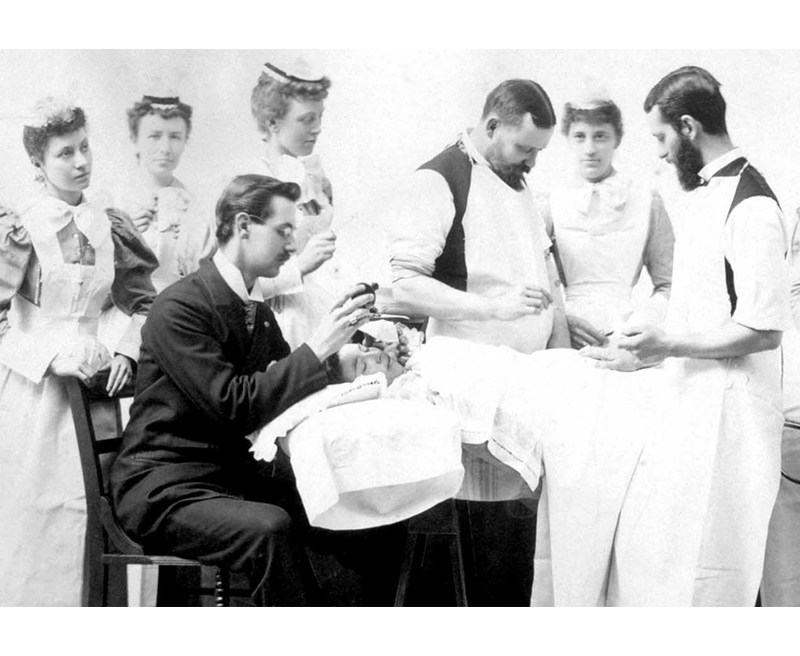
The History of Hair Transplant
Hair transplantation is a field that is constantly evolving with technological innovations. While there is currently no cure for hair loss, hair transplantation offers a permanent solution. The origins of modern hair transplantation date back to the 19th century, when German medical student Johann Friedrich Dieffenbach conducted hair transplantation experiments on animals. In the 1930s, surgical techniques began with eyebrow and eyelash transplants in Japan and evolved into hair transplantation, which spread worldwide after World War II. Modern hair transplantation practices began in the 1950s with the work of Dr. Norman Orentreich in New York. Orentreich demonstrated that transplanted hair continued to grow, marking a significant advancement in the field of hair transplantation. In the 1980s, with the contributions of some Brazilian doctors, techniques were further developed and thousands of hair follicles were transplanted at one time using the microsurgical method of Dr. Rassman of the United States. In the following years, techniques such as Follicular Unit Transplantation (FUT), Follicular Unit Extraction (FUE), and Direct Hair Implantation (DHI) were developed. FUE was introduced to the literature in 2002 by Dr. Rassman and Dr. Bernstein. In 2007, it was transformed into robotic hair transplantation technology by modern doctors and experts. Hair transplantation has become a technology that offers permanent solutions in today's medical and aesthetic fields.
What is a hair transplant?
Hair transplantation is a specialized medical procedure in which hair follicles are taken from a donor area, usually the back or sides of the head, and implanted into areas of the scalp that are bald or thinning. The procedure is meticulously performed by a skilled medical team in a sterile environment to ensure safety and precision.
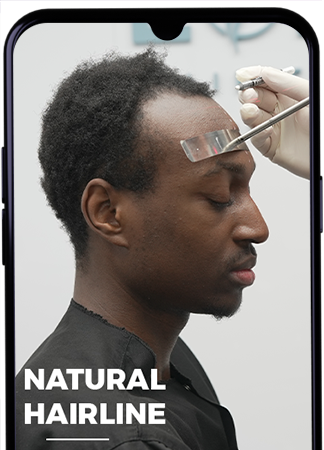
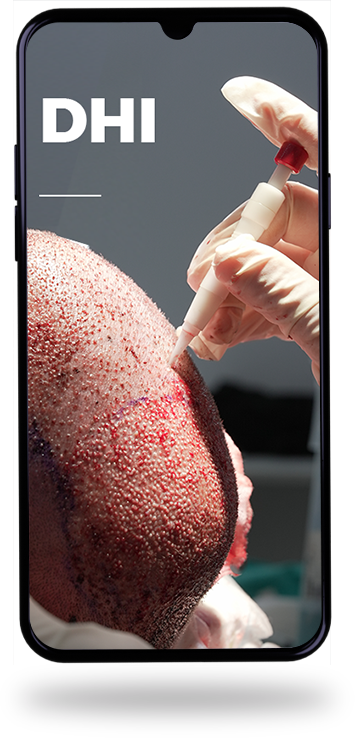
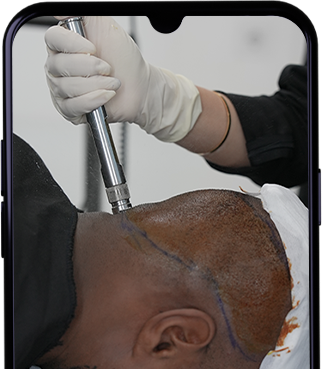
Depending on the size of the area being restored, the procedure can take anywhere from 6 to 10 hours. Careful application of the correct technique is critical to the success of the procedure.Hair transplantation offers significant psychological benefits, as it can restore a person's self-confidence and improve their emotional well-being in social settings. The improved appearance can have a positive impact on a person's personal and professional life, fulfilling not only aesthetic desires but also long-held dreams of hair restoration. While there are several methods of hair transplantation, they all share a common goal: to restore hair in a way that looks natural and permanent.The use of local anesthesia makes the procedure virtually painless, allowing patients to remain awake and comfortable throughout the procedure. Although Follicular Unit Transplantation (FUT) is not the preferred method today, techniques such as Follicular Unit Extraction (FUE) and Direct Hair Implantation (DHI) are widely used. And with modern advancements, recovery times are shorter and results are more natural looking than ever before. This combination of medical expertise, careful planning, and state-of-the-art techniques is making hair transplantation an increasingly popular choice for those seeking to address hair loss.
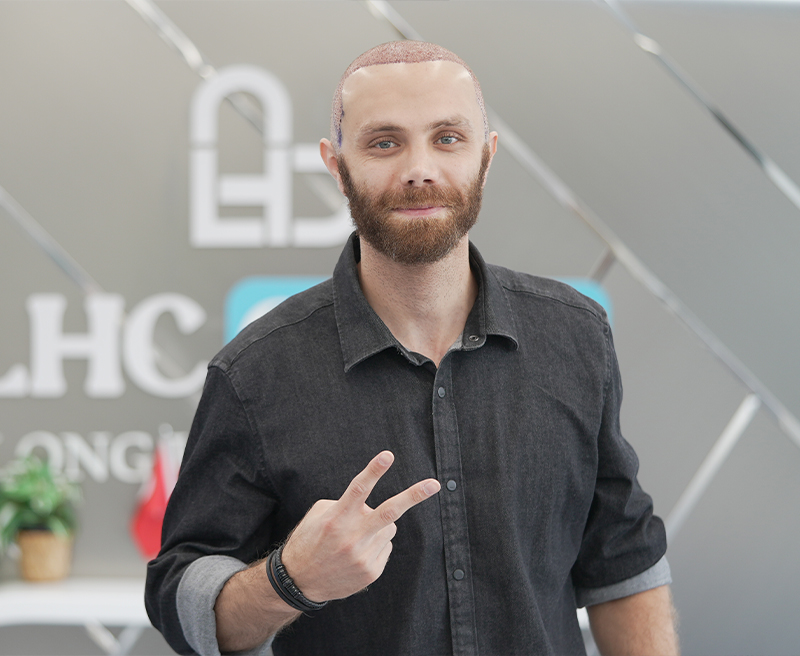
How is a hair transplant performed?
A hair transplant operation should be performed in a hospital environment under sterile conditions by a fully qualified and experienced medical team. There are various techniques for hair transplantation, and the most suitable method depends on individual factors such as age, gender, hair type, the rate and pattern of hair loss, the quality of the donor area, and the level of baldness. The most common techniques include:
- Sapphire FUE
- DHI (Direct Hair Implantation)
- FUE and DHI combo
- FUT (Follicular Unit Transplantation)
- Painless hair transplantation
- Hair transplantation with sedation
Hair Transplantation Stages
- Consultation: Meeting between the doctor and the patient to discuss the details of the procedure. During this stage, the patient's hair loss condition is assessed and information about the transplantation process is provided.
- Shaving: Depending on some factors and the technique chosen, the head may need to be shaved.
- Anesthesia application: Local anesthesia is applied to ensure that the procedure is painless. This helps the patient feel comfortable during the surgery.
- Follicle extraction: Hair follicles are carefully extracted from the donor area using a special micromotor. This step is critical to preserving the health of the follicles and ensuring a successful transplant.
- Collecting the follicles: The extracted follicles are stored in a special solution to maintain their viability and survival rate.
- Opening channels: Channels are created in the recipient area for implantation of the follicles in FUE method. In the Direct Hair Implantation (DHI) technique, this step is skipped because the follicles are placed directly after the extraction.
- Implanting the follicles: The hair follicles are carefully placed in predetermined lines and angles to achieve a natural appearance.
- Preparation for discharge: Once the implantation is completed, the patient will be ready to be discharged.
- First wash: The patient's head gets the first wash the next day after the operation.
- Back to normal: Once you've had your first wash, you can get back to your normal routine but make sure you stick to all the post-surgery instructions.
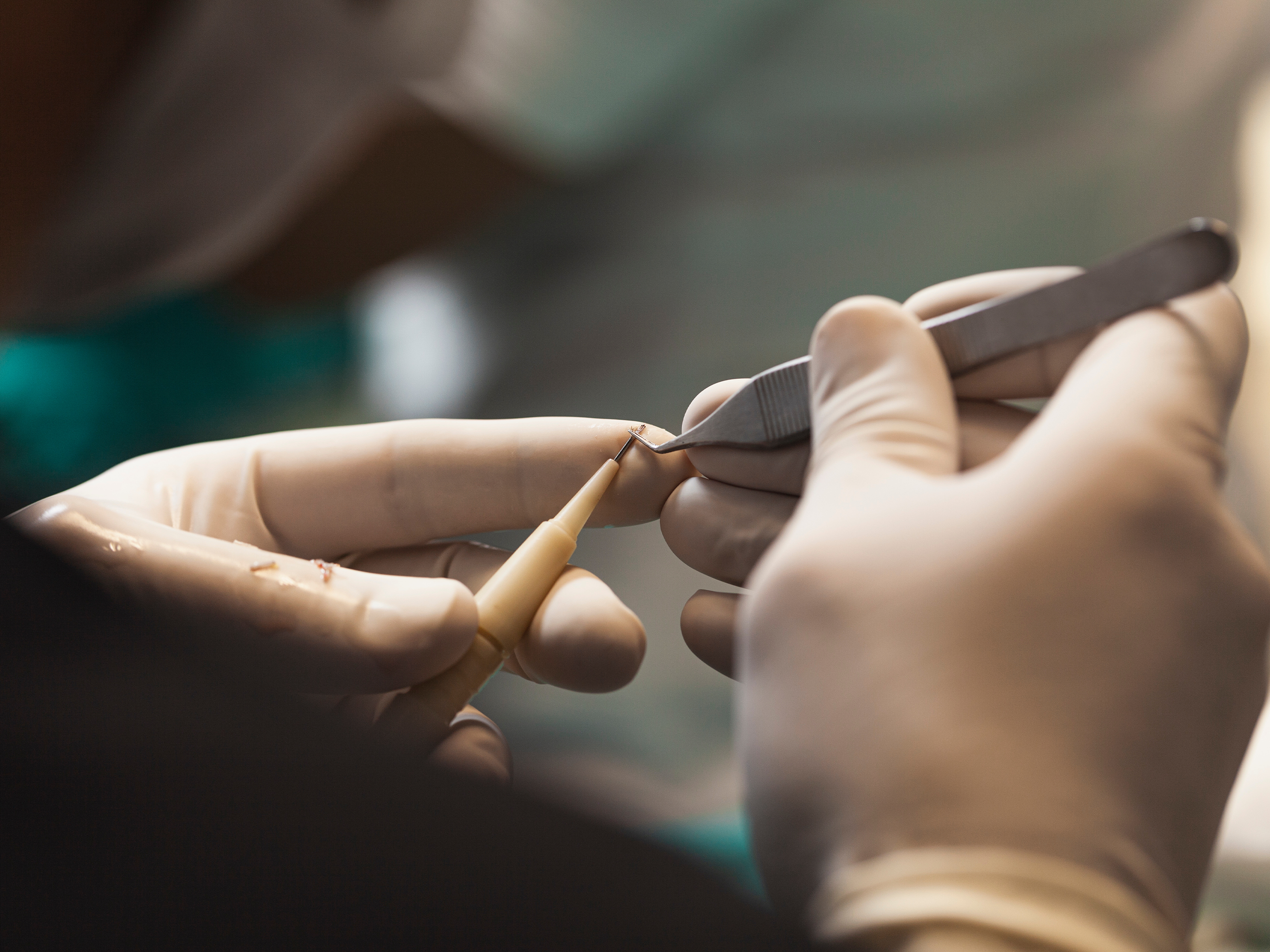
Hair Transplant
Here at the Long Hair Center, under the ownership of Dr. Ahmet Yildirim, we are committed to providing you with 100% customer satisfaction and global quality treatments. Our services are delivered to the highest level of perfection with personalized, first-rate care tailored to meet your individual needs. Leave your wandering, nervous thoughts behind and experience your desired natural results with confidence. This is our assurance to our valued clientele. We provide the best possible services to our patients, with our undivided attention focused on meeting your personal preferences.
The History of Hair Transplant
Hair transplantation is a field that is constantly evolving with technological innovations. While there is currently no cure for hair loss, hair transplantation offers a permanent solution. The origins of modern hair transplantation date back to the 19th century, when German medical student Johann Friedrich Dieffenbach conducted hair transplantation experiments on animals. In the 1930s, surgical techniques began with eyebrow and eyelash transplants in Japan and evolved into hair transplantation, which spread worldwide after World War II.

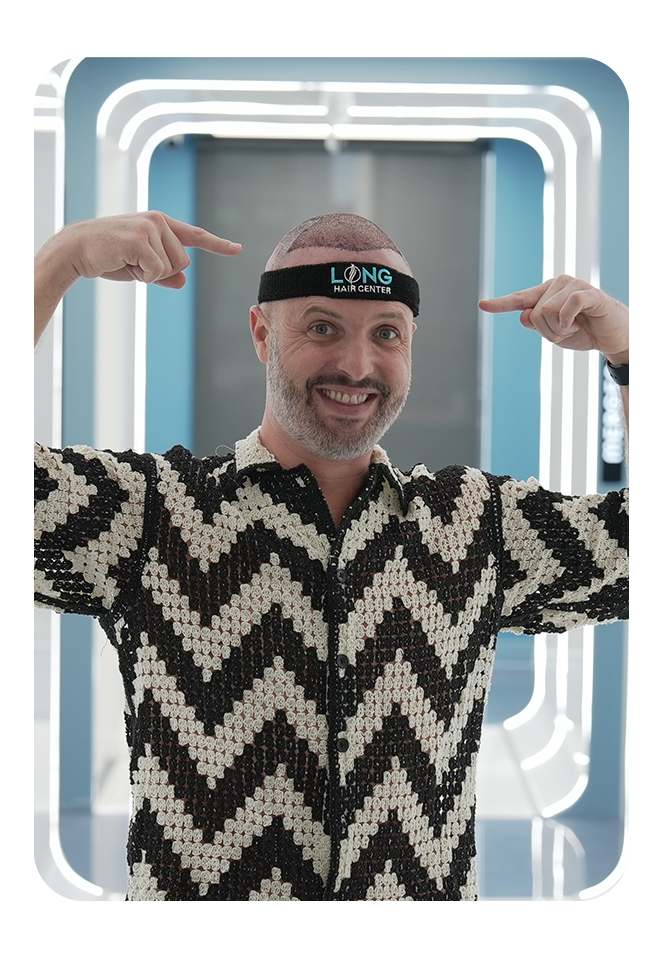
Modern hair transplantation practices began in the 1950s with the work of Dr. Norman Orentreich in New York. Orentreich demonstrated that transplanted hair continued to grow, marking a significant advancement in the field of hair transplantation. In the 1980s, with the contributions of some Brazilian doctors, techniques were further developed and thousands of hair follicles were transplanted at one time using the microsurgical method of Dr. Rassman of the United States.
In the following years, techniques such as Follicular Unit Transplantation (FUT), Follicular Unit Extraction (FUE), and Direct Hair Implantation (DHI) were developed. FUE was introduced to the literature in 2002 by Dr. Rassman and Dr. Bernstein. In 2007, it was transformed into robotic hair transplantation technology by modern doctors and experts.
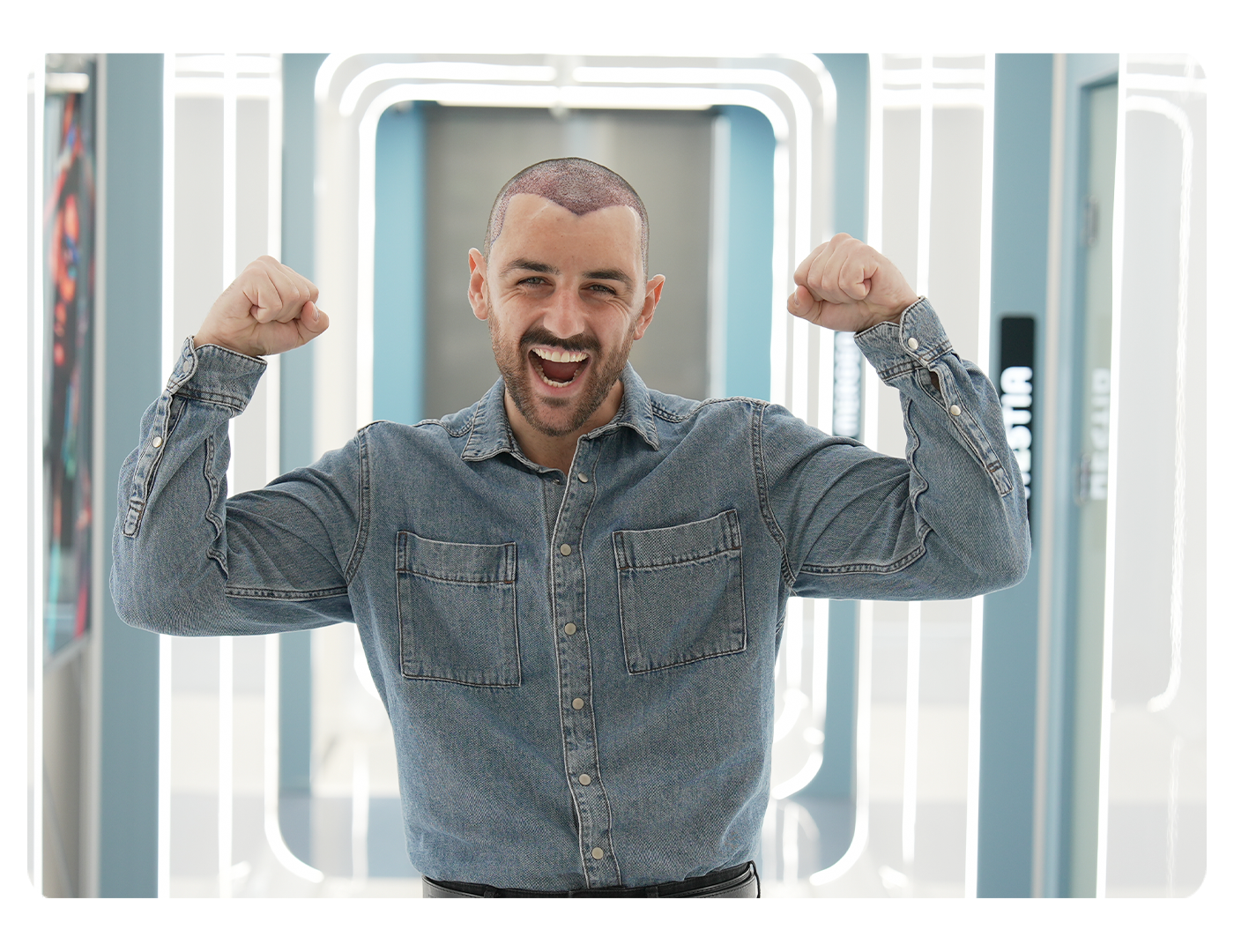
Hair transplantation has become a technology that offers permanent solutions in today's medical and aesthetic fields.
What is a hair transplant?Hair transplantation is a specialized medical procedure in which hair follicles are taken from a donor area, usually the back or sides of the head, and implanted into areas of the scalp that are bald or thinning. The procedure is meticulously performed by a skilled medical team in a sterile environment to ensure safety and precision. Depending on the

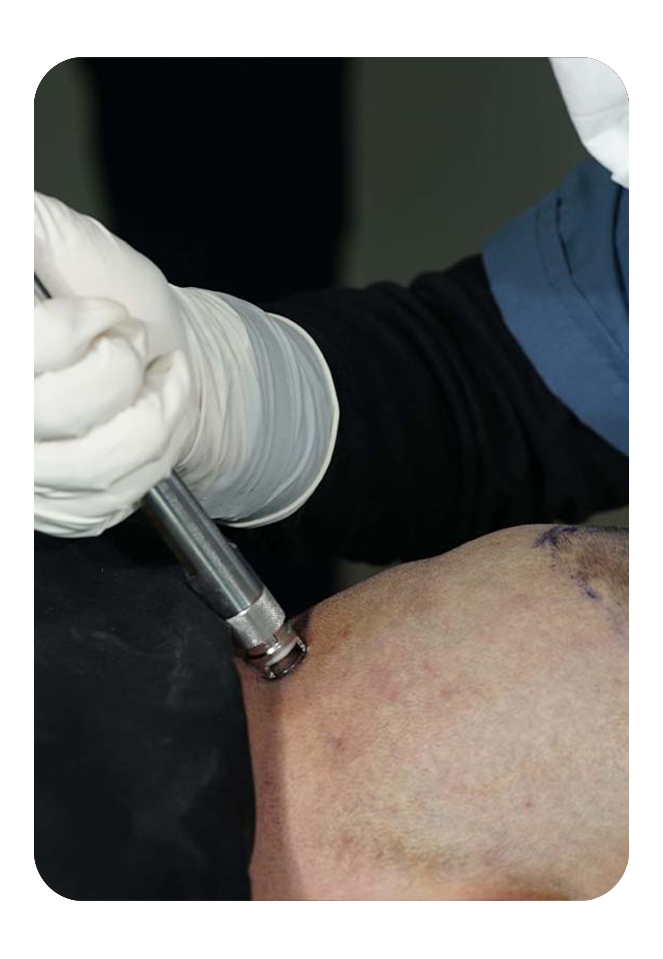
size of the area being restored, the procedure can take anywhere from 6 to 10 hours. Careful application of the correct technique is critical to the success of the procedure.
Hair transplantation offers significant psychological benefits, as it can restore a person's self-confidence and improve their emotional well-being in social settings. The improved appearance can have a positive impact on a person's personal and professional life, fulfilling not only aesthetic desires but also long-held dreams of hair restoration. While there are several methods of hair transplantation, they all share a common goal: to restore hair in a way that looks natural and permanent.
The use of local anesthesia makes the procedure virtually painless, allowing patients to remain awake and comfortable throughout the procedure. Although Follicular Unit Transplantation (FUT) is not the preferred method today, techniques such as Follicular Unit Extraction (FUE) and Direct Hair Implantation (DHI) are widely used. And with modern advancements, recovery times are shorter and results are more natural looking than ever before. This combination of medical expertise, careful planning, and state-of-the-art techniques is making hair transplantation an increasingly popular choice for those seeking to address hair loss.
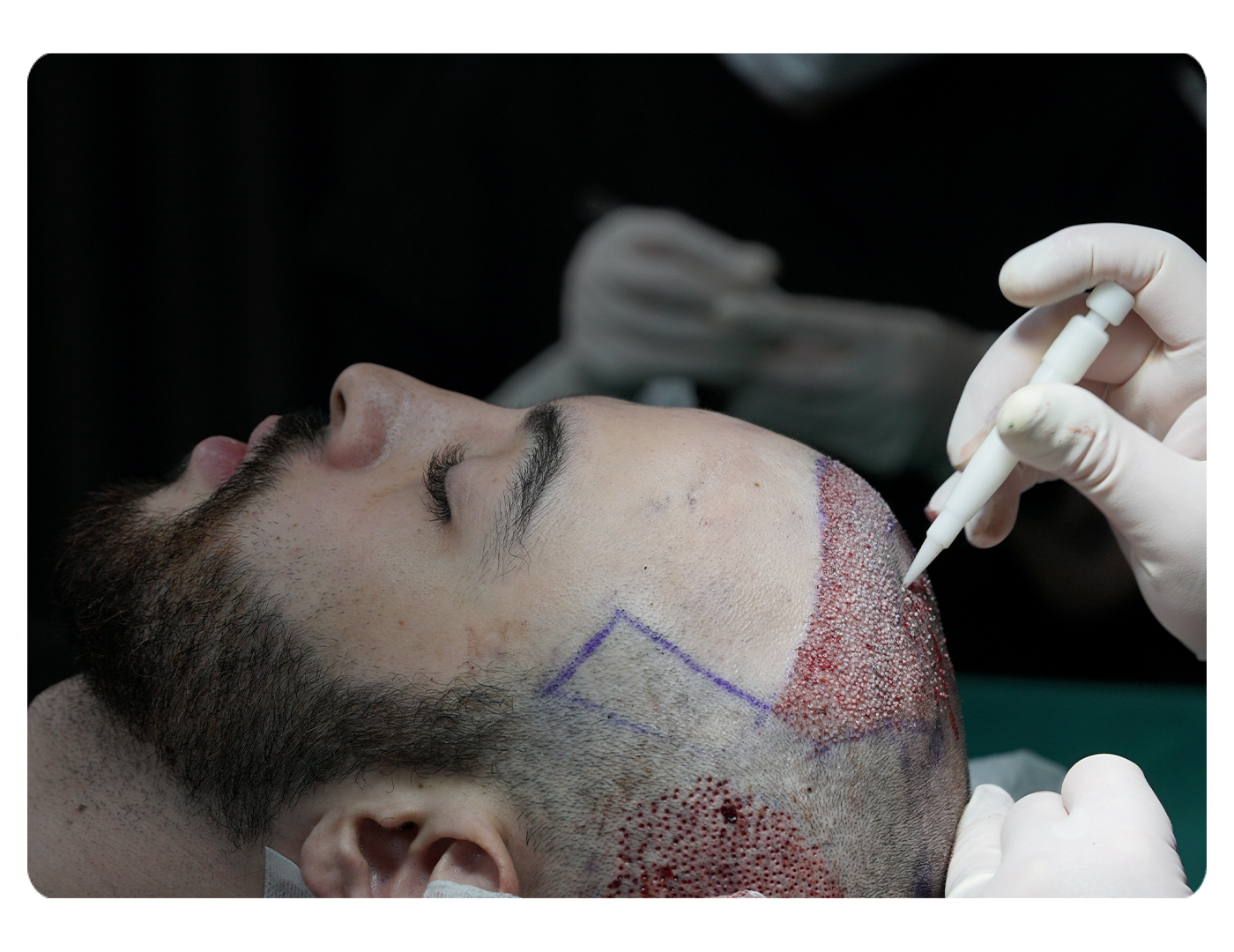
A hair transplant operation should be performed in a hospital environment under sterile conditions by a fully qualified and experienced medical team. There are various techniques for hair transplantation, and the most suitable method depends on individual factors such as age, gender, hair type, the rate and pattern of hair loss, the quality of the donor area, and the level of baldness. The most common techniques include
- Sapphire FUE,
- DHI (Direct Hair Implantation),
- FUE and DHI combo,
- FUT (Follicular Unit Transplantation),
- Painless hair transplantation,
- Hair transplantation with sedation
- Consultation: Meeting between the doctor and the patient to discuss the details of the procedure. During this stage, the patient's hair loss condition is assessed and information about the transplantation process is provided.
- Shaving: Depending on some factors and the technique chosen, the head may need to be shaved.
- Anesthesia application: Local anesthesia is applied to ensure that the procedure is painless. This helps the patient feel comfortable during the surgery.
- Follicle extraction: Hair follicles are carefully extracted from the donor area using a special micromotor. This step is critical to preserving the health of the follicles and ensuring a successful transplant.
- Collecting the follicles: The extracted follicles are stored in a special solution to maintain their viability and survival rate.
- Collecting the follicles: The extracted follicles are stored in a special solution to maintain their viability and survival rate.
- Opening channels: Channels are created in the recipient area for implantation of the follicles in FUE method. In the Direct Hair Implantation (DHI) technique, this step is skipped because the follicles are placed directly after the extraction.
- Implanting the follicles: The hair follicles are carefully placed in predetermined lines and angles to achieve a natural appearance.
- Preparation for discharge: Once the implantation is completed, the patient will be ready to be discharged.
- First wash: The patient's head gets first next day after the operation.
- Back to normal: Once you've had your first wash, you can get back to your normal routine but make sure you stick to all the post-surgery instructions.
Hair transplantation is a process that requires attention from start to finish. Therefore, the entire operation should be carefully followed. Before and after the operation, the following should be considered:
- Checking the person's medical history and conducting necessary examinations
- Following pre-operative instructions carefully
- Achieving a natural-looking appearance and maintaining the golden ratio
- Determining the hairline according to the person's age and gender
- Determining the area to be transplanted or densified according to the person's needs
- Opening channels and implanting hair in accordance with the person's hair growth direction
- Following post-operative instructions carefully
- Careful and thorough follow-up after the operation It is important to note that hair transplantation is a mutual responsibility. Both the doctor and the person undergoing the operation should take care and show mutual attention to achieve the desired result.
Consultation:
Patients from all over the world contact Long Hair Center for hair transplantation. They are
asked to send pictures of their donor area (where the
grafts are taken from) and the recipient area (where the grafts are placed). Our experts analyze
these pictures and prepare a treatment report for
the patient, which includes the number of grafts needed, the number of sessions required, and
the determination of the recipient area.
On the day of the pre-arranged hair transplant operation, the patient arrives at our centre
and is re-examined by our doctor. Before the operation
begins, the patient is given detailed information about the procedure and what to expect,
both verbally and in writing. Additionally, the patient's
medical history is documented in their personal file.
Following this, the patient is taken to the operating room where a blood test is performed
first to check for any infectious diseases. Once cleared,
the next step is to determine the hairline. The specialist doctor takes into account the
patient's age, facial muscles, and the golden ratio when
drawing the hairline. The patient's preferences and approval are also taken into
consideration during this process. For a more precise and naturallooking hairline,
millimetre meters and laser devices may be used.
After the hairline has been determined and marked indelibly, the donor area of the patient is
locally anesthetized for hair removal. Local anesthesia
is a preferred method by specialists over sedation method. Both the donor area and the
transplant area are anesthetized with local anesthesia to
ensure the patient's comfort during the procedure.
Local anesthesia is administered through fine needles to the patient's skin. To reduce the pain
of anesthesia, a painless anesthesia device can also
be activated. This device injects the anesthetic under the skin by spraying it with pressure
onto the area to be anesthetized before the local
anesthesia is applied. This reduces 80% of the pain that can be felt during local anesthesia.



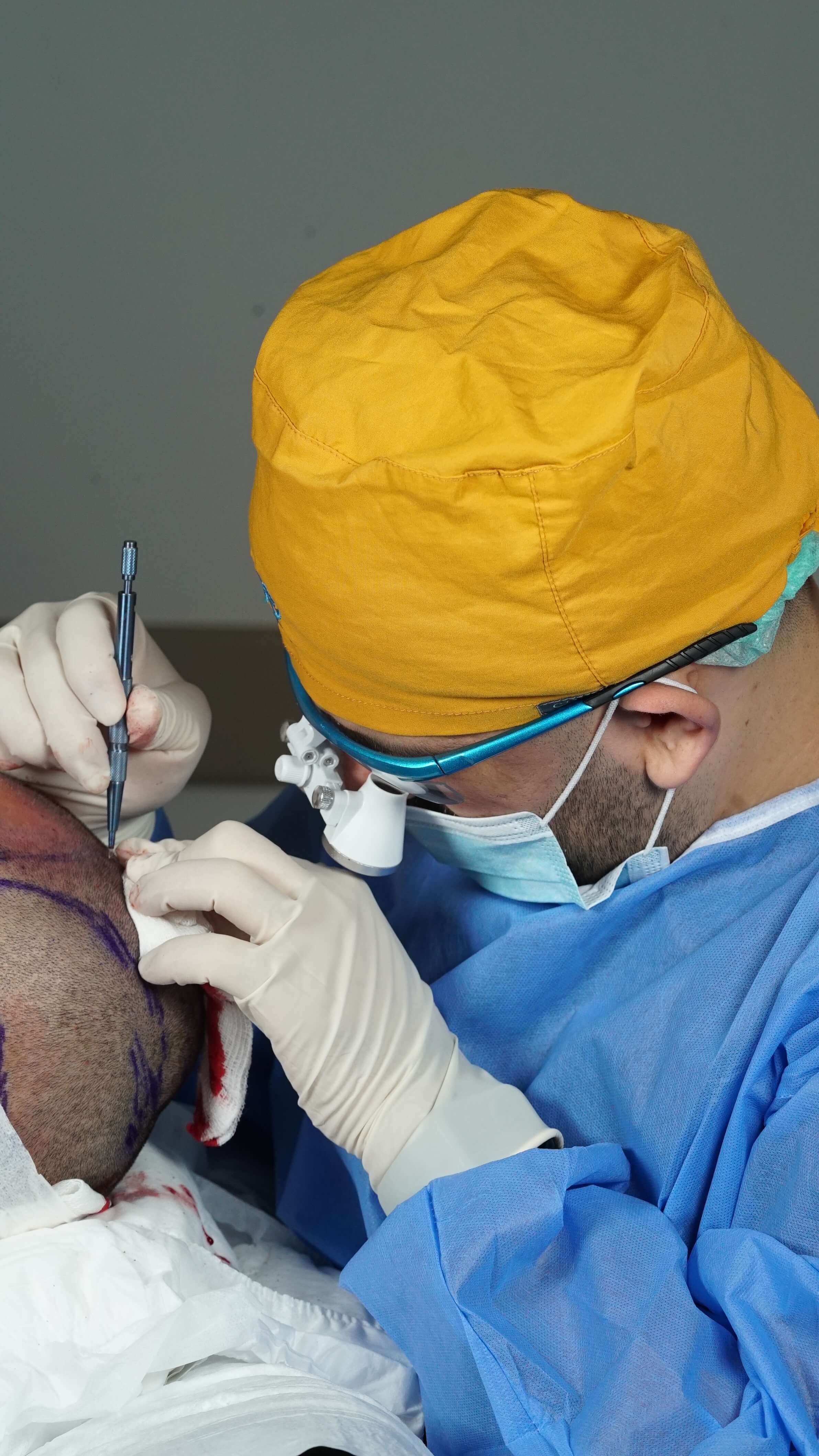
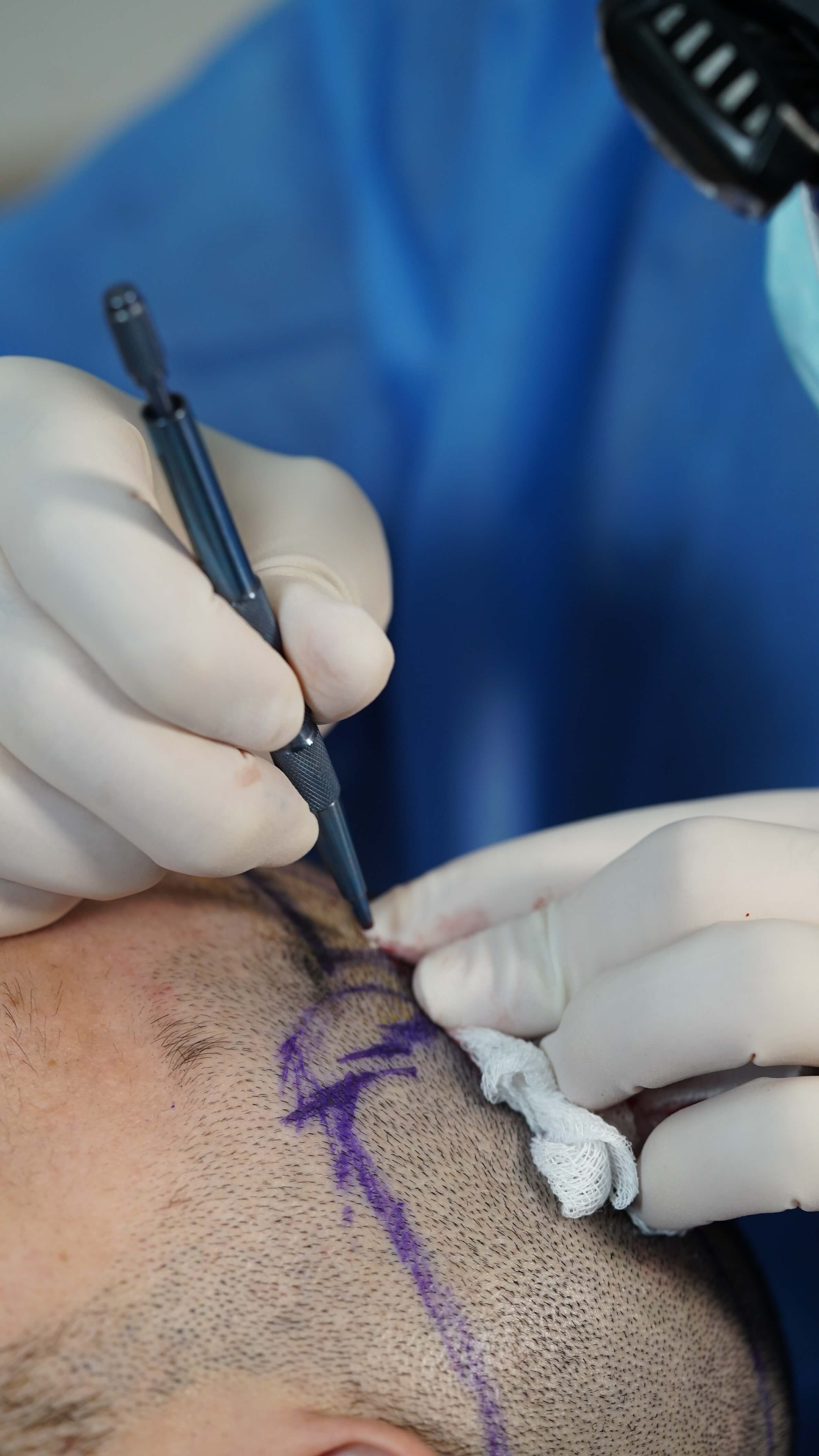
If the FUE method is used in the patient's operation, follicle extraction is performed with the help of a micromotor punch and devices called punches, which vary according to root thickness and length. After the hair follicles in the donor area of the person are examined by the doctor, a follicle extraction process based on the principle of carving around the hair follicles is performed using a punch according to the thickness and depth of the hair follicles. The motor speed is adjusted according to the tissue stiffness in the donor area. Hair follicles are extracted meticulously and homogeneously and then kept in a special solution.
Opening of Channels (Sapphire Method)After the hair follicles are removed, local anesthesia is applied to the area where the hair
will be transplanted for channel opening. Then, the
channels are opened with a sapphire tip. The direction in which the hair will grow and the
hair density are determined by the channels opened.
During the opening of the channels, the patient should remain as still as possible.
There are two factors that should be considered in the trenching process: size and depth.
Therefore, the channels opened should be of a suitable
size for the hair follicles taken; otherwise, a channel smaller than the root will damage
the root during planting, or channels opened larger than the
root will cause tissue destruction and scarring. In addition, the depth at which the hair
follicle is placed during this process is another important
factor. In this context, the canal's depth should not be too shallow to provide adequate
nourishment for the planted root. At the same time,
sufficient depth should be provided without damaging the feeding vessels. Canal opening is
the most critical part of the operation, so it should be
performed by a specialist doctor.
If the operation is performed with the DHI method, there is no need for channel opening.
After the channels have been opened, it is time to implant the follicles. The local
anesthesia applied for the opening of the channels ensures that
the patient does not feel anything during this period, so there is no need for additional
local anesthesia or anesthesia procedures for this step.
While the channels are being opened, the roots, which have been nourished and strengthened
in a special solution, are placed one by one and
with patience, into the previously opened channels using forceps resembling tweezers.
If the operation is performed with the DHI method, the roots placed in the Choi Pen are
directly implanted into the transplant area.
Exit procedures and preparations are made towards the end of the operation. After the transplanted roots are checked for the last time, PRP plasma treatment is performed, and the final washing process is done until there is no bleeding or leakage. Before exiting, the person's sugar and blood pressure vitals are checked, and if everything is normal, they are brought to a sitting position. The donor area is bandaged and wrapped with a special antibiotic cream to prevent any external infection. This bandage stays on for one day and is removed by the doctor during the next day's washing and checking. After the checkout process is completed, instructions for medication and hospitalization positions are explained, a guarantee certificate is given, and directions to the hotel are provided.
FREQUENTLY_ASKED_QUESTIONS
The hair grafts are extracted from the backside of the head, which we determine as between two ears and above the neck. The reason for choosing this specific area as a donor (extraction zone) is that the hair grafts in this region are genetically encoded against inherent hair fall. If the extraction process from this region is performed with better quality artistry, hair fall will never occur for a lifetime. Therefore, we take the hair grafts from the backside of the head, which we call the donor area.
The hair roots are homogeneously extracted one by one with the help of the latest technology system called the FUE method. After the process is over, the hair will never grow the place taken from since it is taken with its root, but it will not be visible since it is done with cater-corner homogeneously
The hair grafts are extracted from the backside of the head, which we determine as between two ears and above the neck. The reason for choosing this specific area as a donor (extraction zone) is that the hair grafts in this region are genetically encoded against inherent hair fall. If the extraction process from this region is performed with better quality artistry, hair fall will never occur for a lifetime. Therefore, we take the hair grafts from the backside of the head, which we call the donor area.
The hair roots are homogeneously extracted one by one with the help of the latest technology system called the FUE method. After the process is over, the hair will never grow the place taken from since it is taken with its root, but it will not be visible since it is done with cater-corner homogeneously
After the hair transplant has been done, our medical consultant assistant will, without stint, follow the whole process with you until you achieve the best result. We will describe to you the growth process of all the hair grafts, respectively.
1-On the 10th day, the process of cleaning scabs will be done.
2-After one month, implanted hair begins to shed moderately.
3-The implanted hair enters the shock hair loss during the 2nd, 3rd, or 4th month, called the resting phase. During this process, you will face a view as if no hair transplant has been done.
4-At the end of the 4th month, the implanted roots will gradually start to grow progressively, and each month will grow faster and more hair than the previous month.
5-In the 7th month, almost 70% of the transplanted hair ultimately grows.
6-All transplanted hairs may take 12 months for the front zone and 14 months for the crown region to grow
The regrowth period of the transplanted hair may vary from person to person. It is a fact that hair roots come out earlier or later than expected, depending on a person's habits such as smoking, alcohol, drugs, and eating habits.
After the hair transplant has been done, our medical consultant assistant will, without stint, follow the whole process with you until you achieve the best result. We will describe to you the growth process of all the hair grafts, respectively.
1-On the 10th day, the process of cleaning scabs will be done.
2-After one month, implanted hair begins to shed moderately.
3-The implanted hair enters the shock hair loss during the 2nd, 3rd, or 4th month, called the resting phase. During this process, you will face a view as if no hair transplant has been done.
4-At the end of the 4th month, the implanted roots will gradually start to grow progressively, and each month will grow faster and more hair than the previous month.
5-In the 7th month, almost 70% of the transplanted hair ultimately grows.
6-All transplanted hairs may take 12 months for the front zone and 14 months for the crown region to grow
The regrowth period of the transplanted hair may vary from person to person. It is a fact that hair roots come out earlier or later than expected, depending on a person's habits such as smoking, alcohol, drugs, and eating habits.
In hair transplantation, the hair roots are extracted from the entire backside of the head, including above the ears and neck, which we call the donor area. The number of roots is determined according to the volume and quality of the bald area, and the extraction is done homogeneously. Since the extracted grafts from this particular donor area are immune to shedding from birth and are genetically coded against shedding, they do not shed and last a lifetime. Indeed, it is determined according to the knowledge and skills of the doctor who extracts these hair roots in a quality way and performs the hair transplant. Hair grafts are found in the donor region as a triple, double, and single hair. In addition, this grouped form differs from person to person. The important thing is to extract these grouped hair roots without cutting, destroying, and damaging them. People who do not have hair follicles in the donor area, either have been treated for cancer or are struggling with a different disease.
As a result, the transplanted roots never fall out again.
90% of the people who have hair transplants in the Long Hair Center do not have postoperative pain. The reason is that the local anesthesia before the surgery is applied with good quality, which causes less harm to the grafts during the operation. We put pain killer medicins between your medical kit after the operation. However, most of our patients who have hair transplants do not need it.




